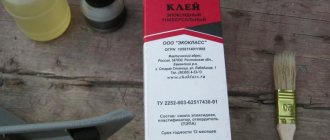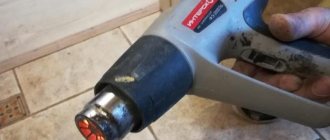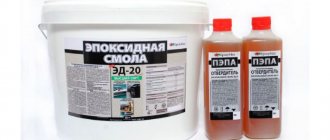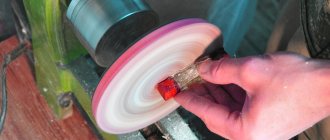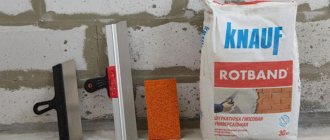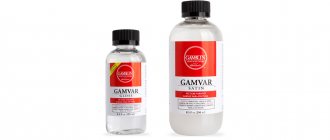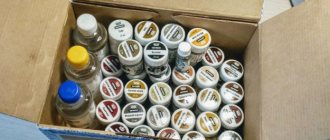Polyester resin has a number of positive properties, but beginners may experience some anxiety when working with it. After all, they are still unfamiliar with the material, and it is not clear what to expect as a result. In fact, polyester resin is easy to use; it doesn’t take long to learn how to work with it. You just need to follow certain rules; beginners may also wonder how long it takes for polyester resin to dry, and how this process occurs. This will be discussed in more detail below.
Physical and chemical aspects of the curing process
Polyester resins, unlike glyphthalic and pentaphthalic resins, dry faster, this happens due to their dilution with hardeners. By adding them to the components of the polyester resin, the polymerization process is started.
This paint and varnish product is characterized by good compatibility with natural and artificial types of pigments. The first variants of pigments that can be added to the material are cadmium, cobalt, chromium, and aniline dyes stand out among the artificial ones. The resin is a thick and sluggish consistency, and it is difficult to work with it in its original form; to obtain the desired consistency, it is usually diluted with styrene, which is aggressive and toxic, at least harmful to inhale.
In this case, other components are also added to styrene, these are EO octoate or cobalt naphthenate. They are responsible for accelerating the polymerization process of polyester resin, for this reason this combination is called pre-accelerated polyester resin.
At the same time, diluting the resin with pigments does not have any effect on how quickly the material dries. The process will already be started and will proceed at its own pace. In this case, after about six to ten months, the material will become very thick and it will no longer be possible to use it; this will happen at a room temperature of +18 to +24 degrees. How, after it hardens, can it be used?
This paint and varnish product is characterized by good compatibility with natural and artificial types of pigments.
Stages of polymer hardening
Having diluted the resin with a hardener solution, the gelatinization process is started at the beginning (when the resin goes from a liquid state to a gel-like state), and then gradually the substance should dry out, and, having hardened, the polyester becomes a solid monolithic mass.
Usually for this purpose they choose:
- Carboxylic acid diamines;
- Their anhydrides;
- Directly carboxylic acids.
Mixing different types of additional elements cannot be done.
We are talking about mixing cobalt accelerators and carbon substances, since combining them together can cause an explosion. For this reason, styrene with cobalt compounds is introduced first, and carbon substances can be diluted in polyester only later.
Stages:
- Gelatinization.
- Rubbery.
- Hard – 1.
- Hard – 2.
Having hardened, the polyester becomes a solid monolithic mass.
Proportions of initiators and accelerators
To start the polymer hardening process, a resin, a hardener, and an initiator are needed. The proportion can only be used that was written in the manufacturer's instructions. Once you have experience, you can determine the number of components yourself. But for the first experience, you can’t do experiments.
Once the curing agent is added, the resin will dry quickly. Therefore, you only need to prepare the required amount of the composition.
The first time it is better to dilute a few ml., introducing each component, mix slowly so as not to form extra bubbles in the composition. But at the same time, you should not exceed 2 minutes.
The proportion can only be used that was written in the manufacturer's instructions.
Peculiarities
Before you start gluing surfaces, you need to understand the composition of this glue, the principles of its action and its scope.
What does epoxy glue consist of? The answer to this question lies in the very name of the glue. It is based on epoxy resin, which is a type of synthetic resin and has universal consumer properties.
The resin requires a certain temperature to cure. For epoxy resin it ranges from -10 to +200 degrees. The choice of temperature depends on the type of composition. Depending on the temperature at which the reaction will occur, epoxy resins are divided into cold and hot curing types. The cold type is used for materials that are not subject to heat treatment, and the hot types are needed for materials that can withstand not only high temperatures, but also exposure to active chemicals.
Cold curing is most often used for gluing materials at home, and is also used in small industries. For large industrial enterprises, the most appropriate type of curing is hot. Aircraft manufacturing, mechanical engineering, electrical engineering, radio electronics, shipbuilding and other industrial sectors use epoxy resins as part of the adhesive.
On sale, the resin and hardener are in different bottles; for gluing, these components will have to be diluted in the required proportion. Both components are polymers with a small molecular weight; upon interaction, simple molecules combine, resulting in a large polymer molecule (when completely solidified).
The universal composition of epoxy glue has a high degree of adhesion; it can glue almost any material: metal, rubber, glass, plastic, wood, the main thing is to combine the resin and hardener in the right proportion. After complete curing, the surface treated with this composition can be subjected to any processing: grinding, sawing, drilling and other types of work can be carried out without deformation of the material.
Fever
During this process, heat is released, which leads to polymerization as a whole. In this case, the temperature of the substance can reach 100 degrees. Such indicators are more typical for large dilutions of polyester resin. During volume ebb, the largest increase in temperature is observed. When a lot of resin is used to cast the floor, the increase will be less high, due to the area in contact with air, self-cooling will occur faster.
If the temperature exceeds the permissible norms, then you can resort to placing the container in cold water, but it should be taken into account that polymerization will slow down. Temperatures above room temperature have an accelerating effect on the gelatinization stage, after which it will speed up the curing. Hardening first passes into the stage of formation of a rubber-like consistency; in this form, when pressed, the resin bends, but quickly returns to its original form. Until this moment, a standard 1.5-2 hours pass.
For hot stages, it is recommended to introduce 50% benzoyl peroxide with dibutyl phthalate. In this case, temperatures can rise to 100-130 degrees, these are quite high values, and require additional protection for the person doing the mixing; if dicumyl peroxide is used as a hardener, then the values can reach 160 degrees.
The temperature of the substance can reach 100 degrees.
Room temperature
Professionals advise working with this material at a room temperature of at least 23 degrees above zero. There are resins on the market, this usually applies to paints and varnishes, work with which can also take place in microclimates of +15 degrees. This information can be found on the product packaging.
In theory, curing of these types will take a long time, about a month. Therefore, in order to improve sales, the manufacturer prepares elements for polyesters of this type for acceleration and polymerization so that diluting them, even at such temperatures, starts the self-heating process, and the process is carried out within an acceptable time frame. They can be varied by changing the accelerator ratio. It is important to follow the instructions here.
How to dilute polyester resin with a hardener, the procedure for introducing all necessary additives includes:
- It is necessary to accurately measure the amount of resin and accelerator (if it was not added earlier before sale), you can find out by studying the packaging, these details must be written on it.
- You should not mix them together or move vigorously, so as not to cause the formation of excess air bubbles; mixing time should be spent 3-5 minutes.
- Add a curing initiator, mixing should last three minutes, if the climatic conditions of the room are hotter than standard, then it will take less time.
- They proceed to pouring the composition into molds or pouring it over the surface; it is important to do this 10-12 minutes before moving on to the gelatinization stage.
- To speed up the transition to the next stage, the temperature in the room must be increased, and, conversely, to slow it down, it must be decreased.
- Primary hardening will occur after 14 hours - a day.
Primary hardening will occur after 14 hours - a day.
Epoxy primer "Reoflex": instructions for use
The composition, characterized by versatility and anti-corrosion properties and consisting of two components, is suitable for:
- ferrous metals;
- galvanized surfaces;
- light alloys;
- cars.
Experts, consumers and repairmen who have tried this material note in their reviews the high ductility of the material.
Please note that the epoxy composition can be tinted with a special pigment paste or decorative filler
Having treated the surface with this composition, you can apply (after drying) any types of enamel:
- glyphthalic;
- polyurethane;
- others, compatible with paintwork materials.
The primer is applied with a roller, but sometimes a special gun is used. For minor repairs, a special composition from an aerosol can is suitable, the application of which does not require additional equipment.
Please note that sometimes you have to dilute the Reoflex epoxy primer. How to do this? For such purposes, you can purchase a special solvent, which is widely available on the market.
When working with such compositions, it is better not to use “folk remedies”, as there is a risk of spoiling the surface and reducing the protective properties of the soil.
How long will polyester resin take to dry?
The type of curing process (cold or hot) has little effect on the timing of polymerization. Typically this happens as follows:
- Gelatinization occurs 40-120 minutes after adding all the elements.
- The rubbery stage occurs after about 2-12 hours.
- Solid stage one. It is characterized by the fact that pressing on an object does not lead to the appearance of traces, but the process of release of volatile substances still continues, 14-24 hours.
- Solid stage two. When the components are completely frozen and will no longer change, this requires 15 to 25 days.
You can bring polyester to the final stage by using high temperatures. For this, thermal chambers or special heating devices are used to create a room temperature of 80-100 degrees for at least two hours. When you need to dry an object made of fiberglass with polyester resin, this “drying” should take 6 hours. Then complete drying will occur in 6-7 days.
When three-dimensional forms are made and if the gelatinization stage has begun, then changes to the product are not allowed.
You can track process transitions by observing changes in product shades. You can find out what colors should be at certain stages in the same instructions for the material.
You can bring polyester to the final stage by using high temperatures.
Positive traits
Buyers note the following:
- the formation of a dense and hard layer on the treated surface, which is particularly resistant compared to polyester putties;
- anti-corrosion properties of the material;
- high adhesion rates in relation to any material, regardless of its type and structure.
Although such compositions are well suited for treating car surfaces during repairs and provide adequate protection, it is worth noting that for the surface on which epoxy primer is applied to completely dry, you will have to wait some time, which is not always convenient.
Reasons for incomplete cure
Sometimes, after all the necessary periods, the polyester does not become as hard as it should be. It continues to stick, its strength is poor. When incomplete curing is temporary, it is removed by increasing temperatures to 100-130 degrees. If this condition persists, nothing can be done. For this reason, you need to follow a number of tips:
- Do not carry out this process at temperatures below +23, and the room humidity should not be higher than 65%;
- Do not change the proportions prescribed by the manufacturer;
- Make sure that no dirt gets into the composition; other substances and containers must be clean.
The third point must be observed unquestioningly, because any elements can disrupt the hardening process of polymers. When everything is mixed and placed in the desired form, it must be covered with film, protecting it from air.
Make sure that no dirt gets into the composition; other substances and containers must be clean.
Safety precautions when working with resins
To avoid causing harm to human health, the master must wear gloves and protective clothing, it must be tight. If resin gets on your skin, you need to wash the area with soapy water or a special resin cleaner.
A respirator must be worn. Fire sources should not be allowed nearby. If a fire occurs, it must be extinguished with sand or a fire extinguisher; water cannot be used. Storage occurs at temperatures from +20 to +23, the room must be ventilated.
Storage occurs at temperatures from +20 to +23, the room must be ventilated.
Compliance with safety measures when working with polyester resin is mandatory. Following the instructions and rules will help you get the desired result. And the process will become simple.
Epoxy repair technology
Fiberglass is needed to strengthen a damaged area of the body or internal components of a car. If necessary, you can add substances to the epoxy that provide even greater reliability of the connection - aluminum or steel (in powder form), talc, sawdust. There are also plasticizers (oils and others) on sale that are added to epoxy to improve its properties. The plasticizer helps the resin not to peel and crack for a long time, which is why it is desirable for use.
Preparatory work
To prepare the product, clean it from any surface and deep contamination. Remove paint, corrosion, and dirt by wiping with solutions, washing, and sanding. Around the site of damage you need to treat the surface to 6 cm, no less. If you move the repair area a little inward, the overlay will hardly stand out from the main background. Before work, the area is degreased. If necessary, apply polish, anticorrosive or galvanizing. Then priming is done.
Installation of fiberglass overlays
First, a layer of epoxy diluted with a hardener is applied to the treated base. Next, the order of work will be as follows:
- apply the smallest piece of fiberglass, roll it with a roller to remove air;
- if air nevertheless penetrates under the material, the latter is carefully pierced;
- apply another layer of resin, layer the next medium-sized piece;
- if necessary, perform another intermediate layer or apply the largest “patch”, alternately wetting it with epoxy resin.
Pieces of fiberglass can be immediately impregnated with resin and applied to the intended place. The main thing is that each next layer overlaps the previous one by a few millimeters. After the resin has completely hardened, it is passed over the surface with a file, then it is sanded. The remaining holes can be covered with auto putty. For large holes, first place a hard patch - made of metal or plywood. This will help prevent damage to the fiberglass. The material is first lubricated with wax or paraffin so that it can be removed upon completion of the work.
Safety precautions
Do not allow epoxy to come into contact with the skin or eyes, which can cause allergies or toxic damage or inflammation. To do this, wear gloves and glasses. You need to work in a respirator, because small particles of fiberglass are also harmful to the respiratory system, as are resin fumes
It is important to install a good hood in the room or thoroughly ventilate it through a window. If resin gets on the skin, wash it well with soap and apply a nourishing cream.
Compliance with such measures will help to do the work efficiently and safely for health.
Source
